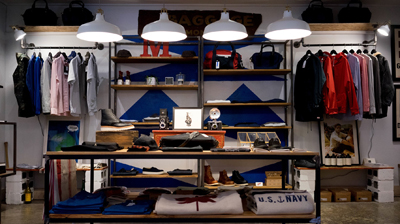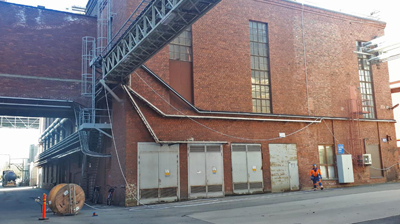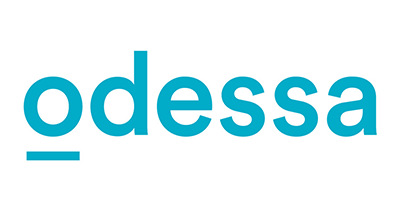
Consumers are moving from measuring their waists to measuring waste as they consider the carbon footprint in their clothing amid widespread warnings of a global climate emergency. As John Maslen reports, growing awareness is accelerating a global trend towards a circular economy in a range of business sectors, where funding from the asset finance industry has a key role to play.
As scientists and protestors warn of a global climate emergency, every industry is considering its impact on the planet. While transport and energy hit the headlines, textile production receives relatively little attention, but it is one of the world’s most polluting industries, responsible for an estimated 1.2 billion tonnes of CO2 annually, which experts believe is greater than international flights and maritime shipping.
It is built on the increasingly unpopular business model of ‘take, make, waste’ where resources are used for single-life products that are then thrown away; cheap, fast fashion is created in low-cost labour markets and shipped around the world, only to be replaced by the next season’s look or colour. This creates a mountain of waste; every second, the equivalent of one garbage truck of textiles is sent to landfill or burned.
The asset finance industry has a potentially important role to play in cleaning up clothing by supporting innovative programmes that underpin the circular economy, where the life of assets, such as clothes or the machinery used to make them, is extended through greater utilisation, reuse and recycling.
Green is a hot new trend in fashion
Clothing rental initiatives, such as Rent the Runway, Le Tote and Gwynnie Bee, aim to offer the latest trends without destroying the planet by maximising utilisation and retaining control over clothes at the end of their life.
When it comes to recycling, a key problem has been the lack of technology that enables effective textile recycling, especially for mixed fibres.
Companies such as the Infinited Fiber Company (IFC) are developing technology that allows clothes to be turned into a high-quality cotton-like fibre that can then be used in new garments.
Its processes ‘digest’ cotton-rich textile waste (including mixed fibres) and other cellulose based feedstock such as paper, cardboard, or agricultural waste such as straw.
IFC fibres can be recycled infinitely without losing their quality, the company says, adding that its production process doesn’t require hazardous chemicals and is almost completely carbon neutral.
IFC ‘s investors include global fashion corporation H&M Group, Singapore-based global biomaterials company RGE and Finnish energy company Fortnum. IFC is developing the patented technology in Finland, where it is building a new plant to create samples for testing with major global brands before it licenses its technology to scale-up. Its goal is to sell the first commercial scale production unit by 2021.
In keeping with its environmental aims, IFC announced in the past week that it is making progress on commissioning its production line by repurposing an old mill which dates back to the 1870’s.

A report called 'A new textiles economy: Redesigning fashion's future', created by the Ellen MacArthur Foundation, calls for the fashion industry to adopt a new vision and create cross industry collaborations to achieve it.
Ellen MacArthur, head of the foundation, which she launched in 2010 to accelerate the transition to a circular economy, said: "Today’s textile industry is hugely wasteful and polluting. The Ellen MacArthur Foundation’s report presents an ambitious vision of a new system, based on circular economy principles, that offers benefits to the economy, society, and the environment."
White goods, green world
The focus on extending the life of raw materials comes as new European laws tackle another key area of waste.
For the first time, manufacturers will be obliged to make several types of home appliance easier to repair following the formal adoption of laws by the European Commission. The new rules are also aimed at reducing the power used by devices ranging from TVs to lighting.
From 2021, all TVs, monitors, fridges, freezers, washing machines, washer-dryers, dishwashers and lighting products sold within the European Union will have to meet minimum repairability requirements aimed at extending their useful life.
These products will also be made easier to recycle through improved design.
Stephane Arditi, policy manager for the circular economy with the European Environmental Bureau, Europe’s largest network of environmental organisations with more than 140 members in 30 countries, said: "This is the kind of innovation that we all need right now. Energy efficiency laws have already cut our energy bills and will continue to do so. Now, by also ensuring we get to use our products for longer, Europe can deliver further savings for people while cutting carbon emissions and waste."
The new measures are part of the EU’s Ecodesign Directive, which removes the most wasteful products from the market, replacing them with units that do the same job while using less energy and resources.
The new energy efficiency requirements aim to reduce energy use by 140TWh annually, equivalent to 5% of EU electricity consumption, which could reduce energy bills by €20 billion ($22 billion).
The repairability requirements can reduce demand for new products and carbon emissions linked to manufacturing, distributing, using and disposing of them.
For example, extending the lifespan of washing machines by just five years would save the EU the equivalent CO2 of taking half a million cars off the roads annually, a recent study found.
Chloé Fayole, programme and strategy director at ECOS, an environmental organisation which promotes the development of standards at European and international level, said: "With these measures, Europe has just taken a big step towards a more circular economy, which should inspire the rest of the world. We now expect EU decision-makers to replicate this approach to many other products and notably electronic products such as smartphones and computers, to minimise their environmental impact.”
European Environmental Bureau experts say that extending the lifespan of smartphones and other electronics by just one year would slash annual carbon emissions in Europe by the equivalent of taking 2 million cars off the road.
Vast amounts of energy and resources are involved in producing and distributing new products as well as disposing of old ones.
Developing products that are easier to repair is a fundamental part of the circular economy, as it extends their working life and also makes repurposing and recycling easier.
This reshaping of business processes will create a substantial need for new finance for updating factories and reshaping processes.
Finland leads the way
The potential of the circular economy to deliver massive environmental benefits that could help mitigate global warming has prompted Finland to become a global pioneer in developing a circular economy.
Its leaders agree that rather than offering products, the foundation for economic growth will be services, the recycling of products and intelligence-based digital solutions.
They believe Finland can become a pioneer and shift the focus of competitiveness to a carbon-neutral circular economy and low-emission solutions.
Finland was the first country in the world to prepare a national road map to a circular economy in 2016. An updated version was published in March this year.
The road map includes almost 30 new actions that are being introduced at a national and local level.
How asset finance supports the circular economy
Asset finance companies are increasingly interested in how they can adapt to support the circular economy.
Pioneering organisations include 3 Step IT, which lease, manages and recycles IT assets.
Its refurbishment centres process hundreds of thousands of returned devices annually. After data has been securely erased, reconditioned devices are resold to an extensive network of buyers.
Overall, 97% of returned devices are sold, with 2% sent for recycling, minimising the amount of waste created.
The company also works in partnership with other lessors that use its asset management services, along with its refurbishment and resale expertise, to reduce IT costs and realise the residual value potential in assets.
This year, 3 Step IT announced a European strategic alliance with BNP Paribas Leasing Solutions to offer technology leasing solutions and lifecycle management that will drive further growth in the circular economy.
Earlier this year, the chief executive officer of 3 Step IT, Carmen Ene, received the Equipment Finance Hall of Fame Award at the International Asset Finance Network Awards, in London.
Jarkko Veijalainen, the founder and chairman 3 Step IT, was named this year’s Business Leader of the Year by the Finnish Business Association.
The processes that support the circular economy are being tested in almost every industry.
Swedish furniture giant Ikea has piloted a leasing service for kitchens and furniture as part of its focus on championing a circular economy and eliminating waste.
The pilot project in Switzerland is looking at ways for customers to ‘buy, care for and pass on products’ as part of its aim to become a fully circular business by 2030.
An IKEA spokesperson said: “We have an ambition to inspire and enable people to play an active role in making the circular economy a reality.
“This can only be achieved through collaboration. In addition to working with customers to find appealing and accessible solutions that enable them to live more sustainably, we are also partnering with stakeholders to work together and share experiences.”
Recently, 130 banks - representing more than $47 trillion in assets - signed the Principles for Responsible Banking, a commitment to take a crucial role in helping to achieve a sustainable future.
The principles were developed in a joint initiative by the UNEP FI and banks including Nordea Bank.
A new whitepaper from leading IT services and software company Tieto looks at the role of asset finance companies in the circular economy and features case studies of businesses that are introducing new business models to extend the life of assets and promote recycling and reuse of equipment and resources.
It offers a concise explanation of key issues including:
- What role can the circular economy play in asset finance?
- What are the benefits of a business model that supports the circular economy?
- How are asset finance companies adapting to greener ways of working?
- What are the next steps to ensure organisations can benefit from the potential of the circular economy?
Per Dahlqvist, head of business development and analytics products, credit solutions and services at Tieto, said: “The asset finance industry can play a vital role in these new ways of doing business, through funding and by supporting the processes that enable change.”

